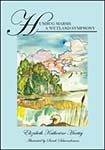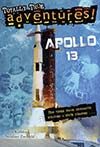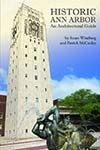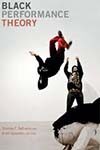Alumni Books
-
Humbug Marsh: A Wetland Symphony
by Elizabeth Katherine Hartig; Illustrated by Sarah Schwendeman
Humbug Marsh is the last mile of natural shoreline on the U.S. mainland of the Detroit River and now part of the Detroit River International Wildlife Refuge. The marsh serves as a vital habitat for 51 species of fish, 90 species of plants, 154 species of birds, seven species of reptiles and amphibians, and 37 species of dragonflies and damselflies, and has been designated as Michigan’s only “Wetland of International Importance” under the international Ramsar Convention.
Author Elizabeth Hartig was a student at U-M when she wrote this book. Her father is the refuge manager of the Detroit River International Wildlife Refuge and oversees stewardship of Humbug Marsh. In 2004 her photo of Humbug Marsh was recognized with a Barbara Stanton Environmental Award of Excellence by The Detroit Free Press and Michigan Environmental Council. Illustrator Sarah Schwendeman has a BFA in art and design from the Penny Stamps School of Art and Design at U-M. She is passionate about holistic and sustainable approaches to the environment, as well as to human relationships.
-
Cattle Kate
by Jana Bommersbach
They called her Cattle Kate. They said she was a dirty rustler. They said she was a filthy whore. And history said it was “rangeland justice” when prominent cattlemen strung her up with her husband in 1889 in Wyoming Territory — the only woman ever hanged in the nation for rustling.
But history was wrong. It was all a lie.
Her real name was Ella Watson. She wasn’t a rustler. She wasn’t a whore. And she’d never been called Cattle Kate until she was dead and they needed an excuse. She was really a 29-year-old immigrant homesteader, lynched with her husband by her rich and powerful cattle-baron neighbors who wanted her land and its precious water rights.
Some people knew the truth from the start. But the legend was stronger than the truth. For more than a century, newspapers, magazines, books — movies, too — spread her ugly legacy. Now, on the 125th anniversary of her murder, the real Ella comes alive in Cattle Kate to tell her heartbreaking story.
-
Apollo 13: How Three Brave Astronauts Survived a Space Diaster
by Kathleen Weidner Zoehfeld
Astronauts Jim Lovell, Jack Swigert, and Fred Haise blasted off for the Moon on April 11, 1970. But after a disastrous explosion damaged their spacecraft, the three men had only one goal: to get back home safely. This informational text makes space travel exciting and accessible for younger readers and features illustrations, photographs, a map, and additional “story behind the story” facts.
This book is part of Steppingstone’s “Totally True Adventures” series for young readers at Random House Books. Author Weidner Zoehfeld graduated from U-M with her master’s degree in 1977.
-
Erna’s Life
by Janice Whelan
Erna Pauline Roberts was in her early 30s when she came to the U.S. as a Latvian refugee in 1949. Until recently she refused to talk about her experiences before emigrating. It was only when Roberts’ daughters gave her a tape recorder that she spoke of living under Soviet rule during World War II. Author Janice Whelan transcribed those recordings, and the result is Erna’s Life.
In this memoir written as biography, Whelan takes readers from Roberts’ idyllic childhood in Latvia through her immigration to America. During this time, Russia occupied her home country, then Germany, and then Russia again. As a result, Roberts’ extended family was split apart. By the time the Quaker Church helped Roberts and her husband leave for New York with their four daughters, she saw her mother, grandfather, and brother sent to Siberia. Her was held in a Nazi labor camp. And her own family was forced to live in overcrowded and unhealthy refugee camps.
“This is the story of how war shatters and destroys the lives of the innocent, especially the women and children,” Whelan says. “But it is also the story of one family’s struggle to survive and their ultimate triumph against what seemed like insurmountable odds.”
Whelan is a 1967 U-M graduate and recently told Michigan Today of a unique “Latvian refugee” connection here at the University. Professor Maris A. Vinovski is the A.M. and H.P. Bentley Professor of History in the College of Literature, Science and the Arts, and a professor of public policy in the Gerald R. Ford School of Public Policy. He also is a senior research scientist in the Center for Political Studies, Institute of Social Research. Most pertinent to this story? He was a Latvian refugee as a child. Upon learning of Whelan’s book, Vinovski visited Erna and her daughter, and discovered many similarities between their story and his own. He then recommended that Erna’s Life be housed in the Hatcher Graduate Library. “He felt it was an important account of the Baltic peoples’ plight during World War II, which is not often told since at that time Russia was an ally of the United States,” Whelan says.
In yet another Latvian connection, Whelan notes that world-famous architect Gunnar Birkerts also was a WWII Latvian refugee. Birkerts was a professor at U-M from 1959-90 and designed the Allan and Alene Smith Law Library Addition at the U-M Law School. He recently saw his design for the Latvian National Library completed.
-
God is an Astronaut
by Alyson Foster
As botany professor Jess Frobisher clears space in her yard to build the greenhouse she’s always wanted, her mind begins to wander. It wanders, as it always does, toward Arthur, her colleague in the botany department. Arthur, who never believed she’d actually start the greenhouse project. Arthur, who in the aftermath of their affair, has cut off contact, escaping to the subarctic to study the pines.
Jess’ mind soon snaps back to reality when she learns the space tourism business founded by her engineer husband has experienced the worst possible disaster: A space shuttle filled with commercial passengers has exploded. Jess’ husband is implicated, and she knows he is withholding information from her. As the tragedy unfolds and the investigations are launched, an increasingly isolated Jess writes to the only person she can be candid with: Arthur. This updated version of the “epistolary” novel unfolds via Jess’ emails to her former lover, freighted with longing, regret, and the old habits of seduction. And though the reader never hears from Arthur, Jess certainly does. Foster paints a vivid relationship via provocative email subject lines, unseen correspondence, and references to an intriguing past that predates the novel.
Foster earned her BA in creative writing at U-M; as a student she won a Hopwood award for her fiction. Foster lives in Washington D.C., where she works for the National Geographic library and writes for the National Geographic News Watch blog.
-
Historic Ann Arbor: An Architectural Guide
by Susan Winesberg and Patrick McCauley
The Ann Arbor Historical Society recently released this guidebook to Ann Arbor’s most significant historic buildings and neighborhoods. U-M graduates will be pleased to find more than 40 campus buildings (Hill Auditorium, the Earl V. Moore Building, and the Power Center for Performing Arts, to name a few) among the 350 sites detailed in the book.
Style sections describe those of the 19th and 20th centuries including Mid-Century Modern. Superb examples of this style can be found in many parts of Ann Arbor, from residences to commercial sites. Architects include Albert Kahn, Eero Saarinen, William Muschenheim, and more.
-
Deadly Secrets
by Robert Boris Riskin
A murder in the Hamptons sends wisecracking, Shakespeare-quoting sleuth Jake Wanderman on an international quest to London and Paris in search of the globetrotting killer. Deadly Secrets is the latest installment in author Riskin’s fast-paced mystery series about this colorful, albeit reluctant, detective. Other titles include Scrambled Eggs and Deadly Bones.
While at U-M Brooklyn native Riskin studied with playwright Kenneth Rowe; since then the author has traveled the globe and supported himself and family at a variety of jobs–from dishwasher to
factory worker, from busboy to hawker of low-price garments for high-fashion women–all while
experiencing the stuff of the human condition that feeds his writing. He currently lives in Sag Harbor.Riskin’s work has appeared in a variety of literary magazines. Learn more at www.robertborisriskin.com
-
The Path to Revenge
by Wayne Pletcher
This new title is the third in alumnus Wayne Pletcher’s series of thrillers about global terrorism. The Path to Revenge follows such previous titles as The Campaign of Fear (2010) and Held Hostage (2012). The books chronicle the adventures of a talented U.S. team seeking to outwit an enemy whose increasingly sophisticated arsenal includes everything from improvised explosive devices to biological and nuclear weapons. The fight is getting more complicated as some of America’s most formidable adversaries join forces to advance a devastating reign of terror.
-
Black Performance Theory
by Thomas F. DeFrantz and Anita Gonzalez, editors
Black performance theory is a rich interdisciplinary area of study and critical method. This collection of new essays by some of its pioneering thinkers–many of whom are performers–demonstrates the breadth, depth, innovation, and critical value of black performance theory. Considering how blackness is imagined in and through performance, the contributors address topics including flight as a persistent theme in African-American aesthetics; the circulation of minstrel tropes in Liverpool and in Afro-Mexican settlements in Oaxaca; and the reach of hip-hop politics as people around the world embrace the music and dance.
Editor Anita Gonzalez is a professor of theater at U-M; her co-editor Thomas DeFrantz is a professor of African and African-American studies, dance, and theater studies at Duke University.










